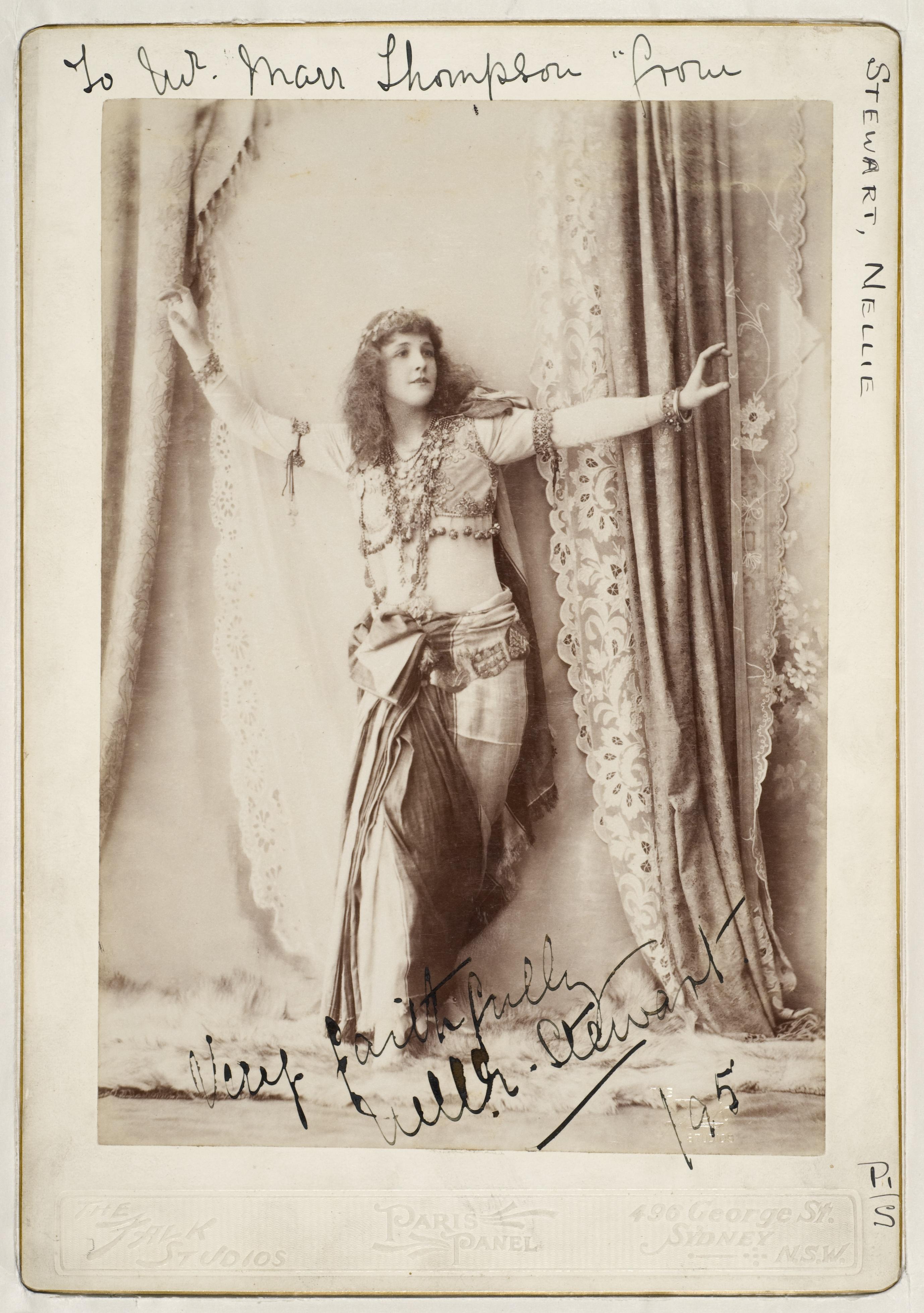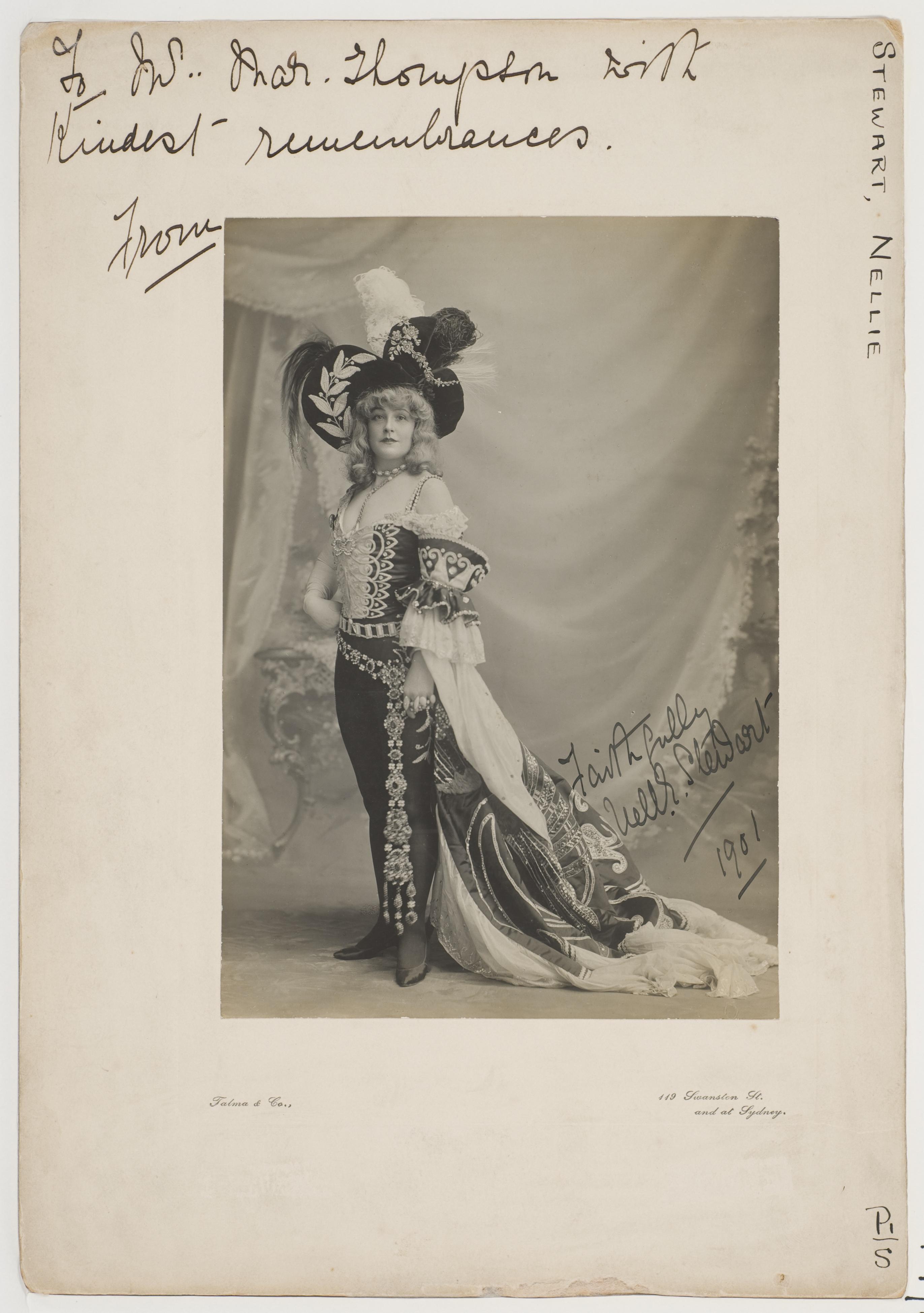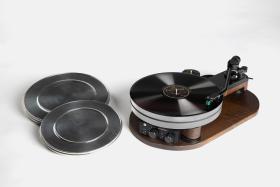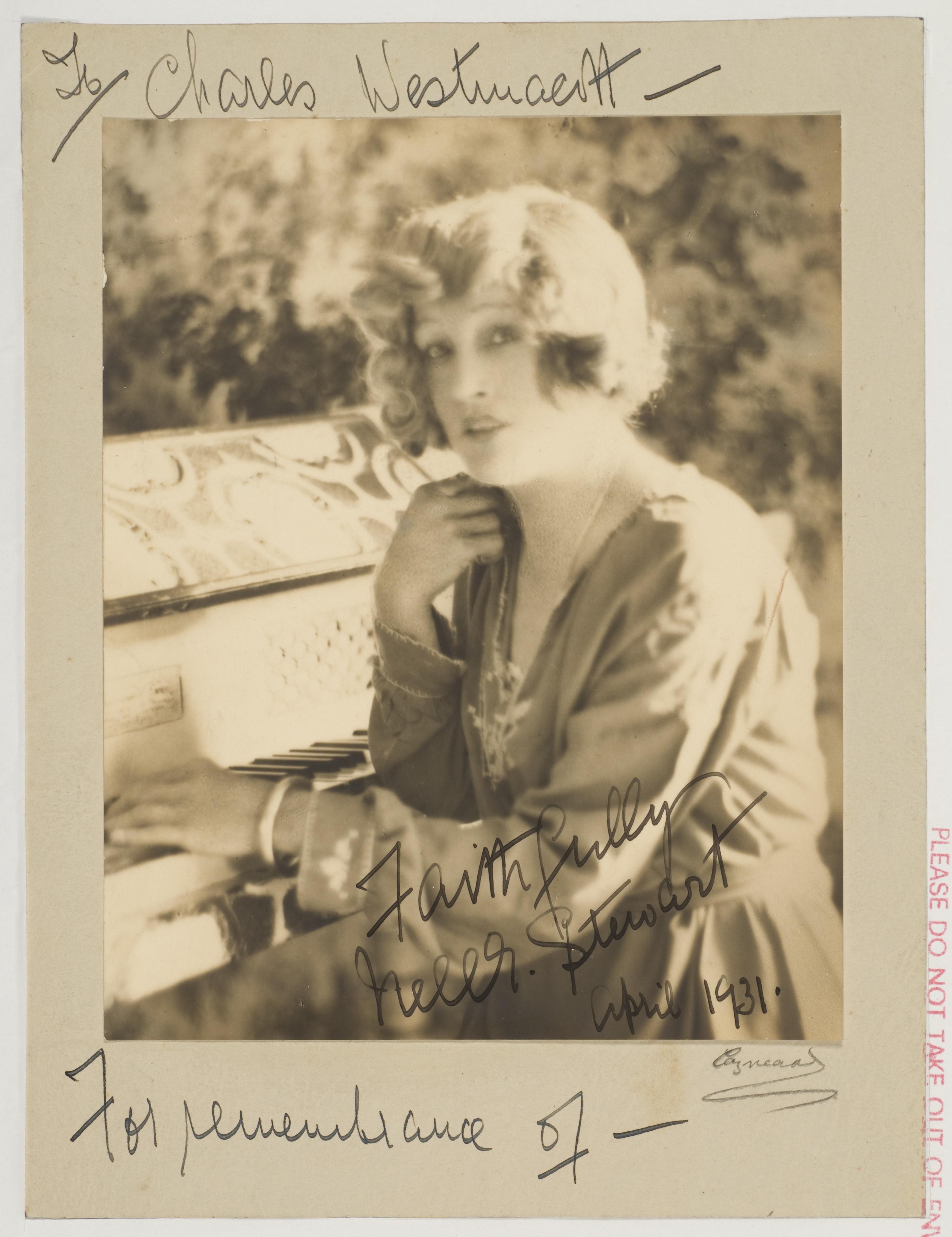Her career was to span seven decades, embracing operetta, comic opera, grand opera, pantomime, comedy and drama. Beautiful and with a youthful appearance that lasted into old age, her greatest attribute, according to her Australian Dictionary of Biography entry, ‘was the magnetism that allowed her to reach beyond the footlights to captivate a public for whom she retained loyalty’.
In 1902 Stewart first appeared in what would become her signature starring role in Sweet Nell of Old Drury. Set in England in the 1600s, the play by Paul Kester tells the story of Nell Gwynne, a real-life orange-seller turned actress and mistress of Charles II. It was huge success and Stewart returned regularly to the role for three decades, convincing many that her personality and looks mirrored the role she played.
A child of theatre parents, Nellie Stewart was born Eleanor Towsey Stewart at Woolloomooloo, Sydney, on 20 November 1858. On stage from the age of five, she sang and danced for her father’s company and other producers.
In the 1870s she starred in productions in England, America and New Zealand, before returning to Australia in late 1880 to appear for 14 weeks as principal boy in Sinbad the Sailor. By that year, according to novelist and memoirist Hal Porter, Stewart’s photograph ‘was to be seen in every barber’s shop and postcard album’. From 1881 to 1894 she played leading roles in 35 comic operas.
In 1888 she permanently damaged her voice when she sang for 24 consecutive nights as Marguerite in the grand opera Faust. She seldom sang after that, but her versatility enabled her to develop a career in comedy and drama.
Stewart became one of the world’s first international stage stars to appear in a feature film when Raymond Longford directed her in an adaptation of Sweet Nell of Old Drury in 1911.
Shooting had begun under the direction of Stewart’s stage producer, co-star and life partner, George Musgrove. Inexperienced in cinema production, Musgrove expended 15,000 feet of film on Act I, according to Longford, by insisting that it should exactly duplicate his stage production. Longford later recalled that when the cast and crew viewed the footage ‘even the great G.M. himself laughed and finally capitulated. The whole contract was revised ... and the writer [Longford] took sole control and started all over again.’
Stewart was said to have received £1000 for appearing in the film, which enjoyed massive success after premiering at Sydney’s Lyceum Theatre in December 1911. ‘When the figure of Miss Nellie Stewart, as the bare-footed orange girl, was descried in the distant perspective of a narrow rural track,’ reported Sydney’s Daily Telegraph, ‘there was great applause; and as she advanced into the foreground and coyly held out an orange, as if offering it to the audience, she had a fine reception.’
‘The picture personation of the story is vividly realistic and dramatic,’ Launceston’s Examiner declared about the silent film, ‘and has certainly lost none of its charm and interest from the fact that the characters merely move through the historic scenes, and do not talk, for the camera has caught the spirit intention of the actors with a fidelity akin to nature.’
When the film screened in America in 1914, Variety magazine judged that Stewart ‘does very good work and gets all that she can out of the part’.
The film Sweet Nell of Old Drury screened regularly in Australian cinemas for at least six years, and Everyones magazine in 1931 believed it held the record ‘for the number of city revivals’.
During the film’s early screenings, commentators wrote of the importance of preserving it for posterity. ‘It is only right a pictorial record should be kept of [Nellie Stewart] in the part’, observed the West Australian, and The Theatre stated, ‘The film is of historic value, for future generations will see it when there is but the name of Sweet Nell left.’
In her 1923 autobiography Stewart writes of her belief that ‘a set of reels of this film is held, to be produced after I am no more’. But by 1931 it was considered a lost film when Everyones asked: ‘Where is Sweet Nell now? ... If the negative still exists it should merit high regard among the treasures of an industry which has just begun to discover its past.’
In the late 1960s, Stewart’s biographer Marjorie Skill and Australian producer- director and film historian Tony Buckley revived the search for the film. Before Stewart wrote her autobiography, recalls Buckley, she had been advised that a 35 mm nitrate print of the film — each of its reels stored in a separate cardboard box — had been deposited with an Australian library.
Skill and Buckley believed this was either the Mitchell Library (part of the State Library of NSW) or Melbourne’s La Trobe Library (part of the State Library of Victoria), but their approaches uncovered no trace of the film. ‘Exhaustive searches for it throughout Australia over many years have failed to unearth it,’ writes Skill.
While the film of Sweet Nell of Old Drury can’t be found at the State Library of NSW, two sound recordings in the collection evocatively capture Nellie Stewart’s personality and performance style. They were recorded on 24 March 1931 by the Columbia Graphophone Company at its studio in the Sydney suburb of Homebush.
One of the records features Stewart and other actors performing extracts from Sweet Nell, and the other presents the monologue ‘Nellie Stewart Addresses Her Public’.
In August 1931, two months after Nellie Stewart died at the age of 72, Columbia presented the Mitchell Library with engraved silver cannisters containing the original recordings.
Listening to it today, Stewart’s farewell address recalls the emphatic, sometimes sentimental, performance style of the early 1900s. But it also conveys her absolute sense of herself as a public identity, her connection with her audience, and her desire to be remembered. The speech begins with the final words of the play Sweet Nell: ‘Memory will be my happiness. For you are enshrined there.’ She then talks of the ‘tears of gratitude’ and ‘tears of joy’ that public affection has brought her and reflects on the ‘indefinable something’ that can endear a person to many others. ‘My endeavour always,’ she declares, ‘is to try and radiate some of the love, esteem, and affection which you have given me all my life.’
That affection poured out at Stewart’s funeral on 24 June at Sydney’s St James’ Church, whose surrounding streets were crammed with thousands of admirers. Although her stage appearances had included starring roles overseas, she continued to identify as Australian, and demonstrated her care for the community through fundraising for disadvantaged children and impoverished hospital patients.
‘And when I am no longer with you, I want you to think of me as just withdrawn into the dimness ... And so, to where I wait, come gently on. Always the same, Nellie Stewart.’
‘There were actors and actresses of a generation grown old,’ reported the Sydney Morning Herald of the funeral, ‘and there were actors and actresses now in their heyday of their fame. There were people on whom Miss Stewart had conferred some kindness long ago, and people who had never known her, but had admired and loved her. As the funeral procession moved slowly down the aisle sobbing women touched the casket with their fingers.’
But it might not have been a final goodbye. In her farewell address preserved for posterity, Stewart suggests the possibility of a reunion with her public in the afterlife: ‘And when I am no longer with you, I want you to think of me as just withdrawn into the dimness ... And so, to where I wait, come gently on. Always the same, Nellie Stewart.’
Graham Shirley is a film historian.
This story appears in Openbook Summer 2020.




